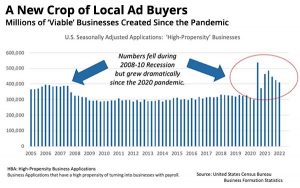Over the years, SEOs have weathered major algorithm updates, upped our content game, and learned to navigate an increasingly competitive SERP landscape.
Google’s laser-focus on customer experience remains unchanged and per usual, it’s the driving force behind big changes on the horizon.
That’s right, the SERPs are changing again, and as you might imagine, organic marketing isn’t likely to get any easier.
In this article, I’ll dig into the three biggest changes coming for SEO and how to prepare.
Google Core Web Vitals Update
As mentioned, Google is famously committed to creating a great experience for its users.
Every update–be it BERT’s nuanced query analysis or 2018’s brutal Medic update–aims to provide faster, more relevant results.
In May, Google announced a new program called the Web Vitals initiative, which aims to give website owners, marketers, and developers a unified set of metrics for quantifying the on-site experience.
According to web.dev, the Web Vitals address the overwhelming number of tools, platforms, and metrics that were often contradictory or confusing.
Instead, the goal is to provide unified guidance and an emphasis on three core elements that can make or break the user experience.
Here’s a quick breakdown of what’s included in the core and the benchmarks to know:
- Largest Contentful Paint (LCP) measures your site’s loading performance. Ideally, visitors shouldn’t have to wait more than 2.5 seconds from the time it starts loading.
- First Input Delay (FID) is used to measure interactivity. Here, you’re aiming for a score lower than 100 milliseconds.
- Cumulative Layout Shift (CLS) measures visual stability. In this case, aim for a number lower than 0.1.
Core Web Vitals, are a subset within the larger Vitals project and are relevant to every website in the index, as they represent three performance factors that can make or break the user experience.
Google recommends tracking these metrics regularly and now allows users to check them from any tool (PageSpeed Insights, Google Search Console, Google Data Studio, etc).
Google says that Core Web Vitals will not be a ranking factor until 2021 and plans to update metrics annually so that they keep pace with evolving customer expectations and technologies. So far, they’ve hinted at some possible new metrics that measure privacy protection, smoothness, and latency.
Search By Intent
Before 2013’s Hummingbird update, optimizing for clunky keyword strings was your best chance at getting in front of your target audience.
While you might look back and remember how “easy” it was to create a high-ranking blog post, Google’s keyword match process wasn’t so great.
Marketers often had to optimize for exact-match phrases that didn’t make sense — otherwise, that URL would be buried deep in the “Os.”
On the user side, there was no way to filter out irrelevant results, which at times, made for a frustrating experience. Since the Hummingbird rollout, Google has made incremental improvements to the algorithm ensuring more relevant results.
Then, in 2019, BERT brought Natural Language Processing (NLP) into the mix, which analyzes user search queries and serves up content based on contextual clues.
NLP or not, SEO isn’t just keywords and query matching. Today, it demands a big-picture approach that brings long-tail keywords, semantically-related search terms, and a deep understanding of what people
You’ll also want to optimize for voice, as it forces you to ask and answer questions in a conversational way. From there, you’ll want to make sure you apply the right schema to your final piece for a shot at the snippets.
According to Backlinko research, about 40% of answers the Google Assistant “reads” aloud come from position zero.
You’ll want to dig into audience insights, find out what kinds of questions people are searching for, and what kinds of content resonate.
Brand Strength and Mentions Online
While great SEO content can increase awareness and reach, it’s hard to get the most bang for your marketing dollars without a great brand.
Google’s love of “strong brands” is only getting stronger. If you look at the standards laid out in Google’s EAT guidelines, brands with more recognition and resources tend to be the products and services people trust.
And while that reward structure often means the search giant favors well-known names, it doesn’t mean small brands are completely out of luck.
Smaller brands and micro-influencers can drive a ton of engagement if they really understand their niche.
As you build more recognition, you’ll start to climb higher in the rankings, reaching more people with your organic content.
Final Thoughts
On the surface, these updates signal some pretty big changes.
However, when you dig deeper, a lot of this stuff aligns with the best practices we’ve gradually embraced over the past few years.
While your SEO strategy may need a good refresh, these changes could make things easier for marketers.
Simplified reporting tools and more context for how users interact with your website helps brands identify and fix problems before they do any real damage.
That said, we’ll just have to wait and see what happens when Google makes the Core Web Vitals official ranking factors and how the platform will address the intangible parts of the user experience.
Digital & Social Articles on Business 2 Community(55)




